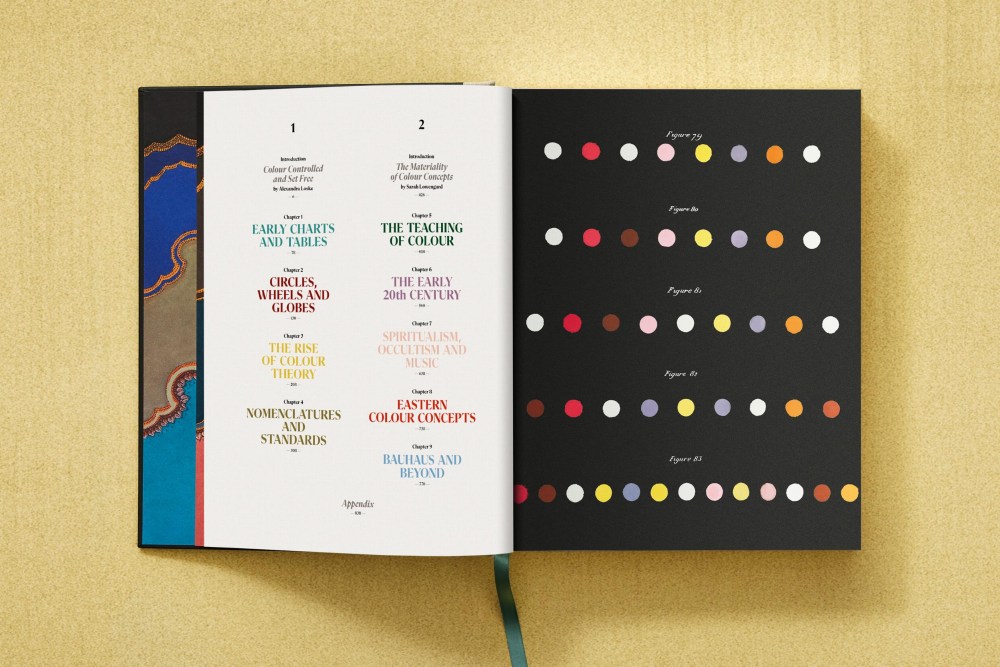How could Taschen have the temerity to use the British spelling of “color” on the cover of The Book of Colour Concepts? Well, given Taschen’s amazing capacity to publish huge multilingual tomes on art, design, typography, photography, popular culture, etc., they can do any linguistic thing they want. So, if they want to call color COLOUR, it is their right. This two-volume set by Alexandra Loske and Sarah Lowengard is not just elegant … and massive … and intelligent, it is the final word on color as an essential life force. “We can trace an active intellectual engagement with colour throughout human history,” writes Loske, “from simple concepts used in early art to highly developed systems rooted in modern science.”

Still, as grand as it is, The Book of Colour Concepts 1686–1963 covers, as you can see from the title, just a slice of color in human history. “No book on colour can provide an encyclopedic record with a cultural, historical, geographical and thematic claim for completion,” Loske adds, noting that “metaphorically speaking” this book is “a coat of many colours.” Exploring 67 color “concepts” in nine chapters, in Vol. 1 the authors feature early charts and tables, circles, wheels and globes, the rise of color theory and nomenclatures and standards; Vol. 2 examines the teaching of color, the early 20th century, spiritualism, occultism and music, Eastern color concepts and, finally, the Bauhaus and beyond.
Lavishly illustrated and generously annotated, this book—published in three languages, as is Taschen’s trademark—is not for the faint of heart or the weak of muscle. The volumes are packed so tightly with beautiful art and essential information that reading them on one’s lap will result in 50 shades of black and blue.

But don’t let the bulk dissuade you from getting this book. It is a masterpiece of erudition on and about the brightest virtues of the natural and supernatural world — colour.








